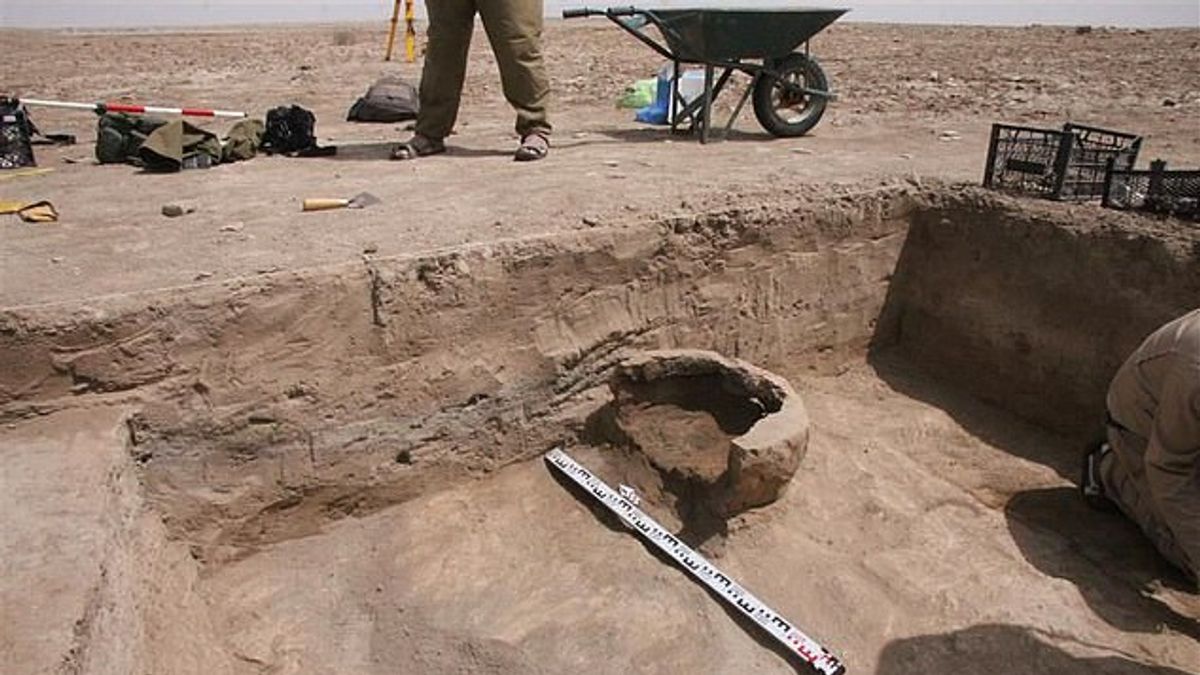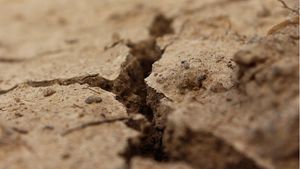JAKARTA - Archaeologists from Russia have discovered the remains of a 4,000-year-old settlement in Iraq that is thought to be the remains of the Babylonian empire. The lost city was discovered last June 24 in the Dhi Qar province of Iraq, which was once the center of the ancient Sumerian empire. This kingdom is often considered one of the world's first civilizations.
"The city found is an urban settlement at Tell al-Duhaila, situated on the banks of a stream," said Alexei Jankowski-Diakonoff, a researcher at the St Petersburg Institute of Oriental Manuscripts and head of the excavation, as quoted by Al-Monitor.
The team found many artifacts, such as rusty arrowheads, the remains of a tandoor furnace, and a clay camel figurine thought to date back to the early Iron Age. They also found the remains of the temple walls about seven feet high and 13 feet wide. In fact, an ancient port was also found where river and sea ships docked.
"This recent discovery is very important because it introduces the world to one of the Sumerian cities overlooking the port," Gaith Salem, a professor of ancient history at Al-Mustansiriya University, told Al-Monitor. “Most of the cities used to have views of the sea but now it has turned into a vast desert.”
Tell al-Duhaila is home to hundreds of important historical sites, including the Great Ziggurat of Ur, which has survived mass vandalism, looting and deliberate destruction of ancient sites in Iraq that began in the early 1990s. It was located near the city of Eridu, from which, according to Sumerian legend, all life began.
The Jankowski-Diakonoff team began its research in the region in 2019. But the actual fieldwork began in April 2021.
"The city could be the capital of a nation founded after the political collapse at the end of the ancient Babylonian era," said Jankowski-Diakonoff. According to estimates around the middle of the second millennium BC.
"Researching the cities of southern Mesopotamia at the end of the ancient Babylonian era and in particular the site of Tell al-Duhaila in particular, has unlocked an unknown page in the history of the oldest civilization on the planet," he said.
The site appears to offer evidence of the earliest agricultural silt use in Mesopotamia, before the rise of the Sumerian civilization.
Mud is granular soil that is left on the banks of rivers. Its presence allowed plants to grow in the dry and arid area that eventually became known as the Fertile Crescent.
Since the site has remained untouched so far, Jankowski-Diakonoff hopes to find cuneiform documents 'in an undisturbed archaeological context'.
According to Jankowski-Diakonoff based on the design and the massive blocks used to make the walls, it was most likely built during the ancient Babylonian era. "It reflects slave culture," he said.
Meanwhile, the Director of Antiquities of Dhi Qar, Amer Abdel Razak, said that the land survey carried out estimated that the site was an ordinary residential area during the ancient Babylonian era. But it could be more than that, given the pieces of pottery and statues found by the Russian mission.
The English, Chinese, Japanese, Arabic, and French versions are automatically generated by the AI. So there may still be inaccuracies in translating, please always see Indonesian as our main language. (system supported by DigitalSiber.id)













